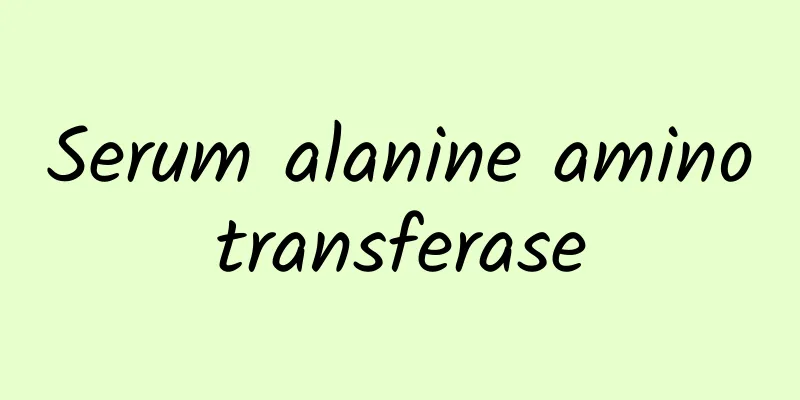Can renal tubular acidosis be cured?

|
Renal tubular acidosis consists of three different stages, each with different severity, and of course the treatment for each stage is also different. If renal tubular acidosis is caused by other diseases, the damage of renal tubular acidosis can be controlled by treating the source of the disease. Mild cases may be cured directly along with the cure of the primary disease. As for the disease that directly causes acidosis, symptomatic treatment is required. 1. Introduction to the disease Renal tubular acidosis (RTA) is a clinical syndrome caused by renal acidification dysfunction due to various causes. The main manifestation is hyperchloremic metabolic acidosis with normal plasma anion gap and relatively normal glomerular filtration rate. In the past, it was believed that when the glomerular filtration function was impaired, acid radicals such as H2PO4- and SO4[sup]2[/sup]- would be retained in the body and replace HCO3-, leading to metabolic acidosis. In fact, the essence of acidosis caused by kidney reasons is renal tubular hydrogen secretion disorder or renal tubular bicarbonate reabsorption disorder. Treatment : For secondary renal tubular acidosis caused by other diseases, the primary disease should be treated first. If the underlying disease can be cured, renal tubular acidosis can also be cured. For those whose primary disease cannot be cured, the following symptomatic treatment can only be adopted as for hereditary renal tubular acidosis. ① Treatment of type I renal tubular acidosis First, supplement with alkali to correct the acidosis. Unlike proximal RTA, the amount of alkali supplementation is less, but sufficient alkali is still needed to balance acid production. Potassium citrate is commonly used, and sodium bicarbonate can also be used, but sodium salts may aggravate hypokalemia. Potassium supplementation to correct hypokalemia. Such as potassium chloride tablets, potassium chloride sustained-release capsules, potassium citrate, etc. Again, prevent and treat kidney stones, renal calcification and bone diseases. ② Treatment of type II renal tubular acidosis For those who can receive etiological treatment, treat the cause first. The patient loses more bicarbonate, so the amount of alkali supplementation required is also relatively large (about 10-20mmol/Kg in 24 hours). Currently, a mixture of sodium citrate and potassium citrate is recommended, because citrate metabolism can produce bicarbonate. It should be noted that the daily dose should be taken in multiple times to maintain a balance between day and night as much as possible. However, the drugs used in alkali tonic therapy are in large dosages and have a bad taste, so patients have poor long-term compliance. The combined use of thiazide diuretics can reduce the dosage of alkali, but the disadvantage is that it may aggravate hypokalemia. Since the reabsorption of bicarbonate in the proximal tubule is coupled with the reabsorption of sodium ions through NBC, patients still need to restrict their salt diet to reduce the extracellular volume and promote the reabsorption of bicarbonate by the renal tubule. To control bone disease, some patients, especially children, may be given active vitamin preparations. ③ Treatment of type IV renal tubular acidosis Treatment and prognosis depend on the underlying cause and the patient's medical history, particularly drug history. In addition, it is crucial to control blood potassium and avoid any potassium-retaining medications and high-potassium diets. Supplementation of mineralocorticoids can not only correct hyperchloremic metabolic acidosis, but also correct hyperkalemia. The commonly used drug is fludrocortisone. Furosemide can increase urinary sodium, Cl-, K and H excretion, so it can also be used to treat patients with type IV renal tubular acidosis. Combination with fludrocortisone can enhance the therapeutic effect. ④The treatment of mixed renal tubular acidosis type III is the same as the treatment of proximal and distal renal tubular acidosis. |
<<: Can renal tubular damage be cured?
>>: When is the safe period for menstruation?
Recommend
What are the foods that nourish the spleen and stomach? Which foods can nourish the spleen and kidneys?
There is a huge difference between the spleen and...
What to do if you have kidney deficiency and sweating? Chinese medicine teaches you how to regulate your diet
In life, sweating is a normal physiological excre...
Learn about cupping and its five benefits
I believe everyone has heard of cupping. It is a ...
How to whiten yellow teeth caused by smoking?
People who smoke frequently will find that their ...
TCM Thyroid and Therapy
Traditional Chinese medicine focuses on fundament...
What is acid reflux in pregnant women?
Generally speaking, heartburn is a type of early p...
What to do if the wound turns black
Skin damage is quite common in our daily life. So...
How to treat measles
When urticaria appears on the human body, it is n...
What is the reason for more leucorrhea
Women start to have leucorrhea when they are in t...
What to do if you have a severe cough during breastfeeding
Women should not take any medicine if they have a...
How to prevent cerebral infarction, 7 tips to keep you away from cerebral infarction
Cerebral infarction refers to ischemic necrosis o...
How to relieve cervical pain? How to relieve cervical pain
As the economic level continues to improve, many ...
What should I do if my anterior cervical lymph nodes are swollen?
Lymph nodes are important immune organs. The diam...
What does gout feel like? How to prevent gout?
Gout has always been called the "imperial di...
Human eye color is genetic
We will find that foreigners have blue eyes, and ...









